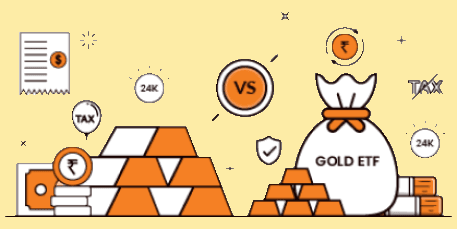As one who is in gold trading and wants to diversify the portfolio, you have to figure out the concepts of gold ETFs and gold futures. Both methods can give you exposure to the price of gold, but each comes with its own unique advantages and downsides.
Let’s explore these 2 investments and understand what’s the difference between them, so you to make the choice that fits you most.
Gold ETFs
In 2003, Australia launched the world’s first Gold ETF – a cost-effective option for owning physical gold or investing in futures. Since then, Exchange Traded Funds (ETFs) have become an increasingly popular investment choice for individuals and institutions alike when it comes to gaining exposure to precious metals like gold.
Investing in gold ETFs provides an accessible and efficient way to tap into the lucrative world of precious metals, even for those with limited funds. It allows investors to diversify their portfolios while taking advantage of the potential returns from investing in this asset class.
The advantages of gold ETFs
Investing in gold ETFs is a cost-effective way to gain exposure and diversify portfolios without requiring a large sum of money. No need for storage costs makes it an even more appealing option, allowing investors to make the most out of their investments with minimal effort.
Gold futures
Gold futures are financial agreements that allow buyers to purchase a certain amount of gold at an agreed price on a future date. Hedgers use these contracts as part of their risk management strategy, while speculators can participate in the market without owning any physical gold.
Investors can bet on the future price of gold by taking either a long or short position. A long-term investor buys the metal in anticipation that its value will increase, with an obligation to take delivery when due. Whereas those who go short are betting against rising prices and sell today with plans to buy back at a lower cost later.
The advantages of gold futures
Gold futures provide investors with a straightforward way to invest in gold, without any additional fees or third-party decisions. By leveraging margin, just 1 dollar can represent up to 20 dollars of physical gold, allowing for bigger returns on smaller investments.
The difference between gold ETFs and gold futures
By reading about both assets, you obviously have been able to notice the difference between them.
In summary, gold ETFs offer investors a way to invest in gold without having to physically own the metal or trade futures contracts. They are generally considered more accessible and less complex than gold futures, making them a popular choice for investors looking to diversify their portfolios with gold. Gold futures, on the other hand, allow investors to speculate on the price of gold by taking long or short positions, but require a higher level of knowledge and experience to trade effectively.
Conclusion
To wrap it up, gold ETFs and gold futures are both promising options for traders that are looking to diversify their portfolios.
Note that every trader has their own unique goals and preferences in terms of strategy. As such, it’s essential to research each option thoroughly before deciding which one to go with. With ETFs and futures both offering convenience as well as risk management options, traders can enjoy access to a variety of strategies tailored to their specific needs. Consider the factors discussed above and choose the one that fits you most.




